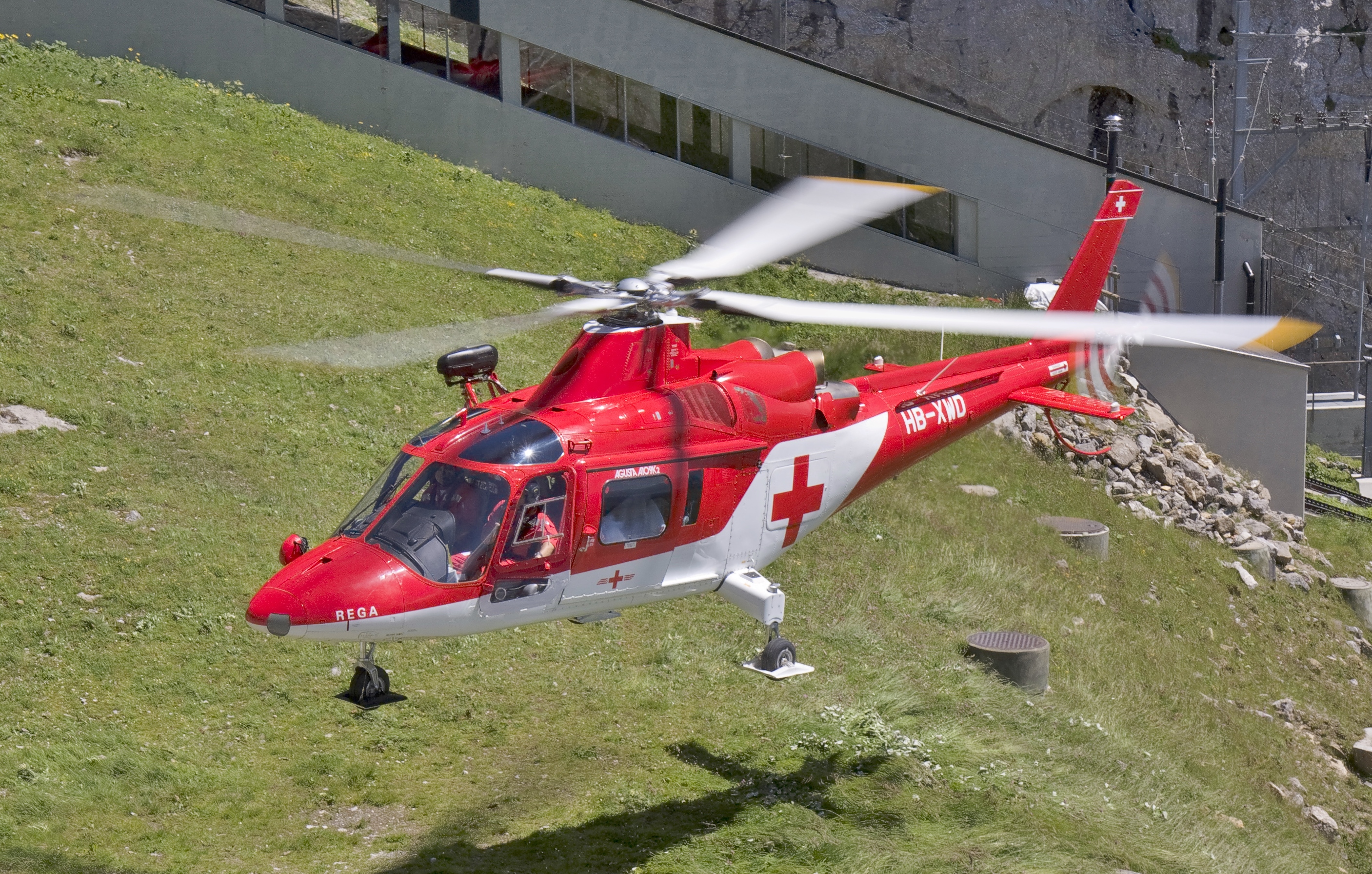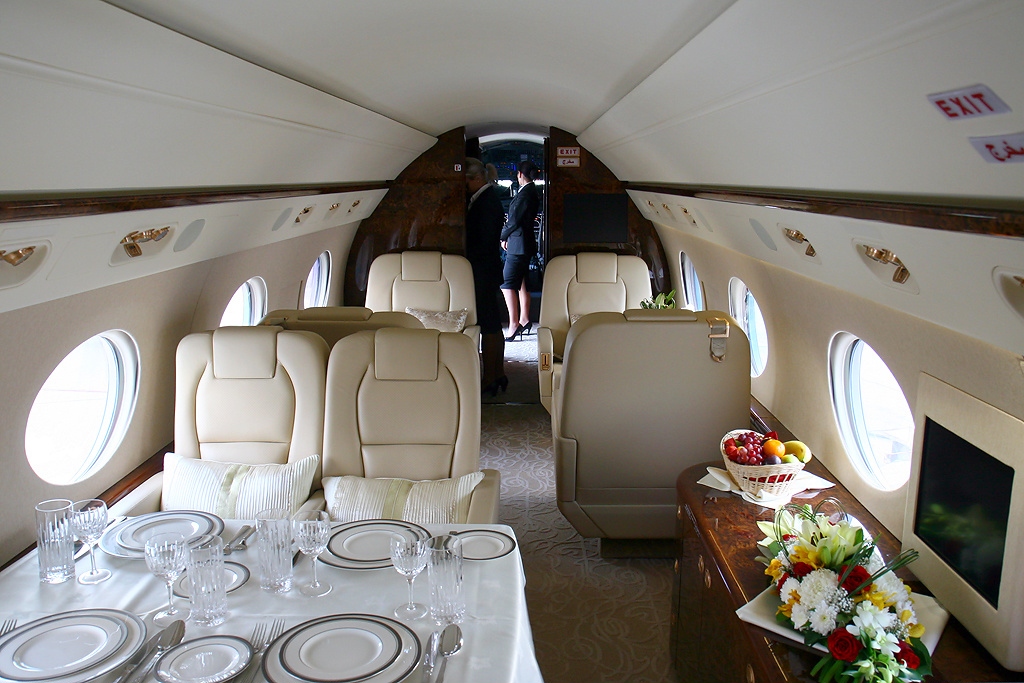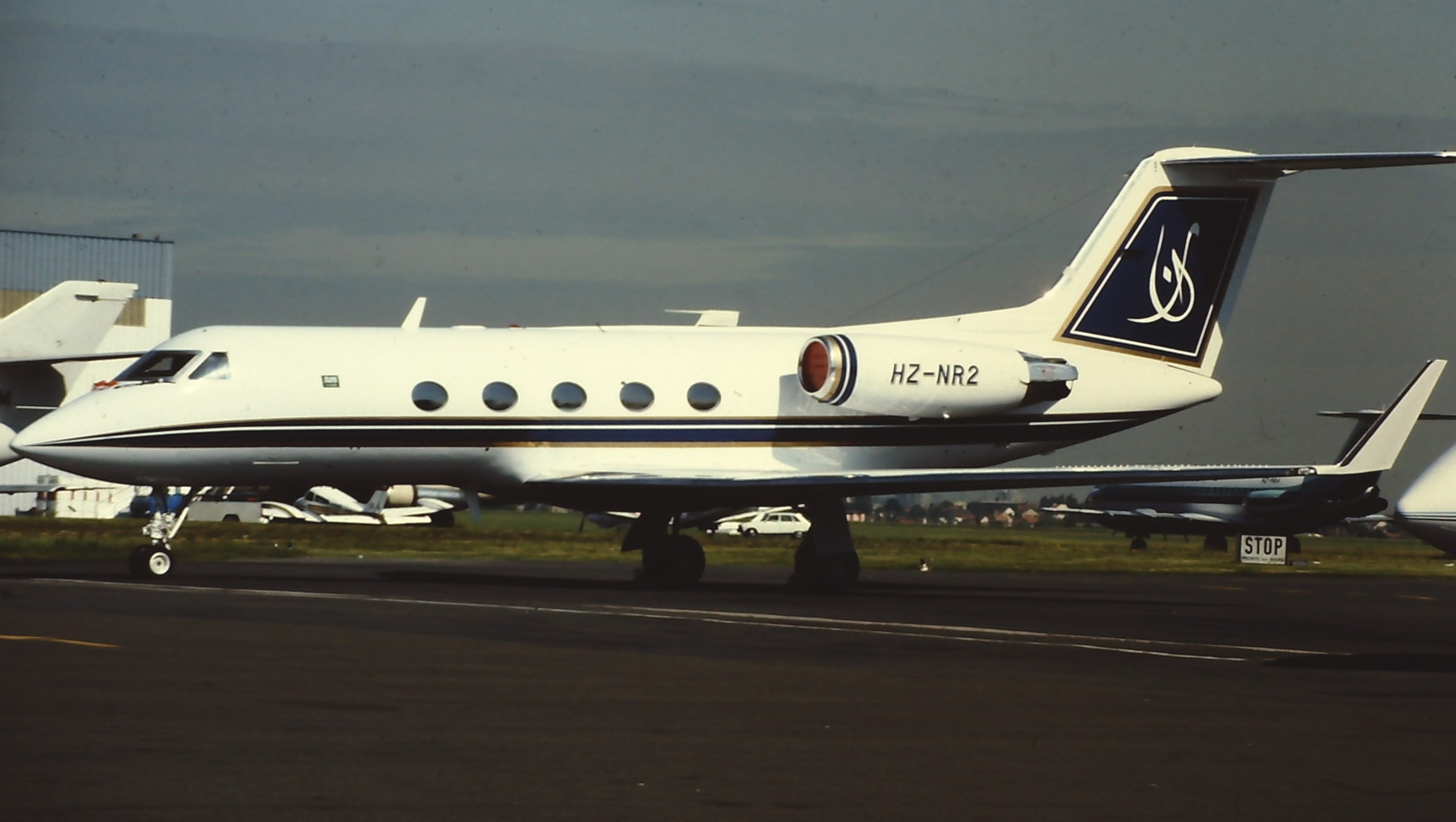|
Aviesa
Aviesa S.A de C.V is a charter airline of Mexico. Its services are FBO, ACMI, handling, aircraft lease and sale, air taxi, VIP charters, aircraft management, air ambulance, cargo, aircraft repair and support for commercial and private aviation. Founded in 1986 by Grupo Hermanos Abed (GHA), the airline was grounded in 1994 after the company's demise. The airline was reborn the next year as an independent entity and in 2002 was acquired by Asclepiodoto Abed, the former director of GHA. It was under their control until October 2008, when Abed died (presumably from SCLC): after his death, Aviesa was converted into a 100% individual company. Aviesa's base of operations is located at Toluca Airport. Fleet Light jets *Learjet 25 * Learjet 31 *Learjet 35 Mid jets *Cessna Citation Excel *Cessna Citation V *Dassault Falcon 20 *Dassault Falcon 50 *Hawker 800 *Learjet 45 * Rockwell Sabreliner Heavy jets * Bombardier Challenger 601 * Bombardier Challenger 605 *Bombardier Global Express * Das ... [...More Info...] [...Related Items...] OR: [Wikipedia] [Google] [Baidu] |
Air Charter
Air charter is the business of renting an entire aircraft (i.e., chartering) as opposed to individual aircraft seats (i.e., purchasing a ticket through a traditional airline). Regulation Charter – also called air taxi or ad hoc – flights require certification from the associated country's civil aviation authority. The regulations are differentiated from typical commercial/passenger service by offering a non-scheduled service. Analogous regulations generally also apply to air ambulance and cargo operators, which are often also ad hoc for-hire services. United States In the U.S. these flights are regulated under FAA Part 135. There are some cases where a charter operator can sell scheduled flights, but only in limited quantities. As of 2021, the FAA had made it a priority to crack down on unauthorised charter flights, according to industry experts. Types of service There are several business models which offer air charter services from the traditional charter operator to ... [...More Info...] [...Related Items...] OR: [Wikipedia] [Google] [Baidu] |
Bombardier Global Express
The Bombardier Global Express is a large cabin, 6,000 nmi / 11,100 km range business jet designed and manufactured by Bombardier Aviation (formerly Bombardier Aerospace). Announced in October 1991, it first flew on 13 October 1996, received its Canadian type certification on 31 July 1998 and entered service in July 1999. Initially powered by two BMW/Rolls-Royce BR710s, it shares its fuselage cross section with the Canadair Regional Jet and Challenger 600 with a new wing and tail. The shorter range Global 5000 is slightly smaller and the Global 6000 is updated and has been modified for military missions. The longer range Global 5500/6500 are powered by new Rolls-Royce Pearl engines with lower fuel burn and were unveiled in May 2018. The larger and stretched Global 7500/8000 have longer ranges. Development Project definition After acquiring Canadair along with its Challenger 600 business jet in 1986, Bombardier studied a longer range business aircraft in which it ai ... [...More Info...] [...Related Items...] OR: [Wikipedia] [Google] [Baidu] |
Bell 206
The Bell 206 is a family of two-bladed, single- and twin-engined helicopters, manufactured by Bell Helicopter at its Mirabel, Quebec, plant. Originally developed as the Bell YOH-4 for the United States Army's Light Observation Helicopter program, it was not selected by the Army. Bell redesigned the airframe and successfully marketed the aircraft commercially as the five-place Bell 206A JetRanger. The new design was eventually selected by the Army as the OH-58 Kiowa. Bell also developed a seven-place LongRanger, which was later offered with a twin-engined option as the TwinRanger, while Tridair Helicopters offers a similar conversion of the LongRanger called the Gemini ST. The ICAO-assigned model designation "B06" is used on flight plans for the JetRanger and LongRanger, and the designation "B06T" is used for the twin-engined TwinRangers. Development Origins and JetRanger On October 14, 1960, the United States Navy solicited responses from 25 aircraft manufacturers to a ... [...More Info...] [...Related Items...] OR: [Wikipedia] [Google] [Baidu] |
Agusta A119 Koala
The AgustaWestland AW119 Koala, produced by Leonardo since 2016, is an eight-seat utility helicopter powered by a single turboshaft engine produced for the civil market. Introduced as the Agusta A119 Koala prior to the Agusta-Westland merger, it is targeted at operators favoring lower running costs of a single-engine aircraft over the redundancy of a twin. Development The ''A119'' designation was first applied to a proposed 11-seat stretched version of the AW109 in the 1970s; however this concept did not emerge and no such rotorcraft actually built. The helicopter that was eventually to enter production as the A119 was conceived in 1994, as Agusta was recovering from a period of financial woes that had nearly put the company out of business. In February 1995, the second of two prototypes conducted its first flight. The first prototype was used for static tests. Civil certification was originally anticipated in 1997, this deadline was missed allegedly due to multiple issues suc ... [...More Info...] [...Related Items...] OR: [Wikipedia] [Google] [Baidu] |
Agusta A109
The AgustaWestland AW109, originally the Agusta A109, is a lightweight, twin-engine, eight-seat multi-purpose helicopter designed and initially produced by the Italian rotorcraft manufacturer Agusta. It was the first all-Italian helicopter to be mass-produced."Law Enforcement: Italy." ''Police Aviation News'', No. 175. November 2010. Its production has been continued by Agusta's successor companies, presently Leonardo S.p.A. (formerly , merged into the new |
Boeing 737-800
The Boeing 737 Next Generation, commonly abbreviated as 737NG, or 737 Next Gen, is a narrow-body aircraft powered by two jet engines and produced by Boeing Commercial Airplanes. Launched in 1993 as the third generation derivative of the Boeing 737, it has been produced since 1997 and is an upgrade of the 737 Classic (−300/-400/-500) series. It has a redesigned wing with a larger area, a wider wingspan, greater fuel capacity, and higher maximum takeoff weights (MTOW) and longer range. It has CFM International CFM56-7 series engines, a glass cockpit, and upgraded and redesigned interior configurations. The series includes four variants, the −600/-700/-800/-900, seating between 108 and 215 passengers. The 737NG's primary competition is the Airbus A320 family. , a total of 7,124 737NG aircraft had been ordered, of which 7,096 had been delivered, with remaining orders for two -800, and 26 -800A variants. The most produced variant was the 737-800, with 4,991 commercial, 191 m ... [...More Info...] [...Related Items...] OR: [Wikipedia] [Google] [Baidu] |
Boeing 737-700
The Boeing 737 Next Generation, commonly abbreviated as 737NG, or 737 Next Gen, is a narrow-body aircraft powered by two jet engines and produced by Boeing Commercial Airplanes. Launched in 1993 as the third generation derivative of the Boeing 737, it has been produced since 1997 and is an upgrade of the 737 Classic (−300/-400/-500) series. It has a redesigned wing with a larger area, a wider wingspan, greater fuel capacity, and higher maximum takeoff weights (MTOW) and longer range. It has CFM International CFM56-7 series engines, a glass cockpit, and upgraded and redesigned interior configurations. The series includes four variants, the −600/-700/-800/-900, seating between 108 and 215 passengers. The 737NG's primary competition is the Airbus A320 family. , a total of 7,124 737NG aircraft had been ordered, of which 7,096 had been delivered, with remaining orders for two -800, and 26 -800A variants. The most produced variant was the 737-800, with 4,991 commercial, 191 mi ... [...More Info...] [...Related Items...] OR: [Wikipedia] [Google] [Baidu] |
Airbus A320
The Airbus A320 family is a series of narrow-body airliners developed and produced by Airbus. The A320 was launched in March 1984, first flew on 22 February 1987, and was introduced in April 1988 by Air France. The first member of the family was followed by the longer A321 (first delivered in January 1994), the shorter A319 (April 1996), and the even shorter A318 (July 2003). Final assembly takes place in Toulouse in France; Hamburg in Germany; Tianjin in China since 2009; and in Mobile, Alabama in the United States since April 2016. The twinjet has a six-abreast cross-section and is powered by either CFM56 or IAE V2500 turbofans, except the CFM56/PW6000 powered A318. The family pioneered the use of digital fly-by-wire and side-stick flight controls in airliners. Variants offer maximum take-off weights from , to cover a range. The 31.4 m (103 ft) long A318 typically accommodates 107 to 132 passengers. The 124-156 seat A319 is 33.8 m (111 ft) long. ... [...More Info...] [...Related Items...] OR: [Wikipedia] [Google] [Baidu] |
Gulfstream V
The Gulfstream V (Model GV, pronounced "G-five") is a long-range, large business jet aircraft produced by Gulfstream Aerospace, derived from the previous Gulfstream IV. It flies up to , up to and has a range. It typically accommodates four crew and 14 passengers. It first flew on November 28, 1995, and entered service in June 1997. It is used by the US military under the designation C-37A. It is followed by an improved version, the Gulfstream 550 (Model GV-SP). Development In the early 1990s, the Gulfstream V (GV) was developed as a response to the Bombardier Global Express. It was certified on April 11, 1997. Capable of flying up to , it rolled out in 1995 and was Gulfstream's first ultra-long range business jet. Total production of the Gulfstream V was 193 aircraft. By 2018, 1997-1999 Gulfstream GVs were trading at $8.8-10.25 million. By 2019, a GV was worth around $10 million: below $6 million for a fixer to p $13 million for a late model low-time aircraft. Design Com ... [...More Info...] [...Related Items...] OR: [Wikipedia] [Google] [Baidu] |
Gulfstream IV
The Gulfstream IV (or G-IV or GIV) and derivatives are a family of twinjet aircraft, mainly for private or business use. They were designed and built by Gulfstream Aerospace, a General Dynamics company based in Savannah, Georgia, United States, from 1985 until 2018. Aircraft power is provided by two Rolls-Royce RB.183 Tay turbofans. Upon delivery of the last G450, over 900 GIV/GIV-SP/G450 units had been produced. The last G450 was delivered on 19 January 2018 after 365 deliveries over 12 years, ending a 30-year production run, to be replaced by the G500. Development Gulfstream, in collaboration with Grumman, began work on the Gulfstream IV in March 1983 as a re-engined, stretched fuselage derivative of the Gulfstream III. The first GIV made its maiden flight on September 19, 1985. The model received type certification from the FAA on April 22, 1987. The G-IV entered into service with serial number 1000 in 1987 and was upgraded to the special purpose ''GIV-SP'' version a ... [...More Info...] [...Related Items...] OR: [Wikipedia] [Google] [Baidu] |
Gulfstream III
The Gulfstream III, a business jet produced by Gulfstream Aerospace, is an improved variant of the Grumman Gulfstream II. Design and development The Gulfstream III was built at Savannah, Georgia, in the United States and was designed as an improved variant of the Grumman Gulfstream II. Design studies were performed by Grumman Aerospace Corporation in collaboration with Gulfstream American Corporation. Design of the Gulfstream III started with an effort to synthesize a completely new wing employing NASA supercritical airfoil sections and winglets. Optimization studies considering weight, drag, fuel volume, cost, and performance indicated that a substantial portion of the new wing benefit could be secured with modifications to the existing wing. As a result, the new wing concept was canceled and work began on design modifications that would retain the Gulfstream II wing box structure and trailing edge surfaces. Compared to the G-1159 Gulfstream II, the wing has more span ... [...More Info...] [...Related Items...] OR: [Wikipedia] [Google] [Baidu] |
Gulfstream II
The Gulfstream II (G-II) is an American twin engine business jet designed and built by Grumman and then in succession, Grumman American and finally Gulfstream American. Its Grumman model number is G-1159 and its US military designation is C-11A. It has been succeeded by the Gulfstream III. The first Gulfstream II flew on October 2, 1966.Taylor, John W.R., ''Jane's All the World's Aircraft 1984–85'', Jane's Publishing Company, 1984. Design The Gulfstream II is a twin-jet swept wing corporate transport powered by two Rolls-Royce Spey turbofan engines and designed to provide high speed and long range capability without sacrificing the airport performance, reliability, and other operational advantages of its predecessor, the turboprop Gulfstream I. Preliminary design of the wing was influenced by both cruise and low speed considerations. The aft-mounted engine location was selected after extensive analysis and design iterations considering aerodynamic, structural, and ground cl ... [...More Info...] [...Related Items...] OR: [Wikipedia] [Google] [Baidu] |





.jpg)
.jpg)



